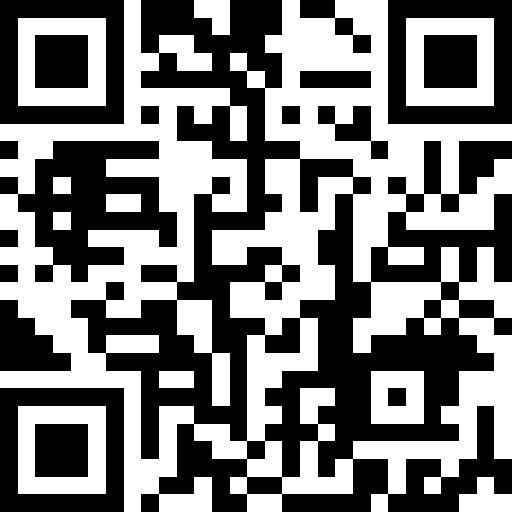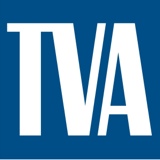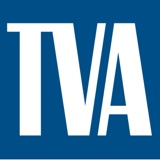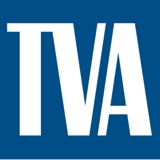Title Page
-
Document No.
-
TVA PEER-TO-PEER OBSERVATION DATA SHEET
-
Conducted on
Observer Information
OBSERVER INFORMATION
-
Observer ID #
-
Select date
-
Coached:
-
WORK GROUP
PLEASE EMAIL / SCAN / FAX / TEXT TO:
-
Rodney Smith / WEST - FAX (423) 751-9697 PHONE (423) 653-8320 rjsmith0@tva.gov
Jeff Burcham / WEST - PHONE (423) 702 1015 jgburcham1@tva.gov
Wayne Crisp / EAST - FAX (423) 751-9818 PHONE (423) 280-4180 swcrisp@tva.gov
Lou Johnson / EAST - PHONE (423) 664-2469 lejohnson0@tva.gov
Body Position
1.0 BODY POSITION
-
1.1 LINE OF FIRE : <br>(Does the person place all parts of their body so they will not be pinned, crushed, struck, sprayed or trapped by energy release of any kind?)
-
Aware
-
Agree
-
Control
-
WHILE : Describes clearly the task or situation.
-
WAS (At-Risk) : Describes clearly the potential injury.
-
BECAUSE : Describes clearly the barrier or obstacle to doing the behavior safely.
-
SUGGESTION : Are solutions offered.
-
COMMITMENT : What the employee intends to do differently in the future.
-
1.2 PINCH POINTS : <br>(Does the person keep body parts from area between stationary or moving parts that are closing or might close together?)
-
Aware
-
Agree
-
Control
-
WHILE : Describes clearly the task or situation.
-
WAS (At-Risk) : Describes clearly the potential injury.
-
BECAUSE : Describes clearly the barrier or obstacle to doing the behavior safely.
-
SUGGESTION : Are solutions offered.
-
COMMITMENT : What the employee intends to do differently in the future.
-
1.3 EYES ON PATH : <br>(Does the person look in the direction they are moving, walking, cycling, operating mobile equipment?)
-
Aware
-
Agree
-
Control
-
WHILE : Describes clearly the task or situation.
-
WAS (At-Risk) : Describes clearly the potential injury.
-
BECAUSE : Describes clearly the barrier or obstacle to doing the behavior safely.
-
SUGGESTION : Are solutions offered.
-
COMMITMENT : What the employee intends to do differently in the future.
-
1.4 EYES ON TASK / HANDS : <br>(Does the person keep their eyes on the work being performed?)
-
Aware
-
Agree
-
Control
-
WHILE : Describes clearly the task or situation.
-
WAS (At-Risk) : Describes clearly the potential injury.
-
BECAUSE : Describes clearly the barrier or obstacle to doing the behavior safely.
-
SUGGESTION : Are solutions offered.
-
COMMITMENT : What the employee intends to do differently in the future.
-
1.5 Ascending / DESCENDING : <br>(When ascending / descending steep stairs and ladders does the person face stairs / ladder and maintain three-point contact?)
-
Aware
-
Agree
-
Control
-
WHILE : Describes clearly the task or situation.
-
WAS (At-Risk) : Describes clearly the potential injury.
-
BECAUSE : Describes clearly the barrier or obstacle to doing the behavior safely.
-
SUGGESTION : Are solutions offered.
-
COMMITMENT : What the employee intends to do differently in the future.
Body Use / Ergonomics
2.0 BODY USE / ERGONOMICS
-
2.1 LIFTING AND LOWERING : <br>(Does the person use legs and keep back straight.)
-
Aware
-
Agree
-
Control
-
WHILE : Describes clearly the task or situation.
-
WAS (At-Risk) : Describes clearly the potential injury.
-
BECAUSE : Describes clearly the barrier or obstacle to doing the behavior safely.
-
SUGGESTION : Are solutions offered.
-
COMMITMENT : What the employee intends to do differently in the future.
-
2.2 TWISTING : <br>(Does the person pivot feet to keep upper torso aligned with legs when doing task?)
-
Aware
-
Agree
-
Control
-
WHILE : Describes clearly the task or situation.
-
WAS (At-Risk) : Describes clearly the potential injury.
-
BECAUSE : Describes clearly the barrier or obstacle to doing the behavior safely.
-
SUGGESTION : Are solutions offered.
-
COMMITMENT : What the employee intends to do differently in the future.
-
2.3 PUSHING / PULLING : <br>(Does the person maintain a balanced body position while pushing / pulling?)
-
Aware
-
Agree
-
Control
-
WHILE : Describes clearly the task or situation.
-
WAS (At-Risk) : Describes clearly the potential injury.
-
BECAUSE : Describes clearly the barrier or obstacle to doing the behavior safely.
-
SUGGESTION : Are solutions offered.
-
COMMITMENT : What the employee intends to do differently in the future.
-
2.4 OVEREXTENDED / CRAMPED : <br>(Does the person position self to prevent stretching to full arm or body length when performing tasks?)
-
Aware
-
Agree
-
Control
-
WHILE : Describes clearly the task or situation.
-
WAS (At-Risk) : Describes clearly the potential injury.
-
BECAUSE : Describes clearly the barrier or obstacle to doing the behavior safely.
-
SUGGESTION : Are solutions offered.
-
COMMITMENT : What the employee intends to do differently in the future.
-
2.5 RESPONSE TO ERGO RISKS : <br>(Does the person deliberately break up the stress by changing positions, moving, stopping activity or stretching?)
-
Aware
-
Agree
-
Control
-
WHILE : Describes clearly the task or situation.
-
WAS (At-Risk) : Describes clearly the potential injury.
-
BECAUSE : Describes clearly the barrier or obstacle to doing the behavior safely.
-
SUGGESTION : Are solutions offered.
-
COMMITMENT : What the employee intends to do differently in the future.
Tools / Equipment
3.0 TOOLS / EQUIPMENT
-
3.1 SELECTION / CONDITION : <br>(Does the person select the correct tool for the job?)
-
Aware
-
Agree
-
Control
-
WHILE : Describes clearly the task or situation.
-
WAS (At-Risk) : Describes clearly the potential injury.
-
BECAUSE : Describes clearly the barrier or obstacle to doing the behavior safely.
-
SUGGESTION : Are solutions offered.
-
COMMITMENT : What the employee intends to do differently in the future.
-
3.2 USE : <br>(Is the person using the tool as it was designed to be used?)
-
Aware
-
Agree
-
Control
-
WHILE : Describes clearly the task or situation.
-
WAS (At-Risk) : Describes clearly the potential injury.
-
BECAUSE : Describes clearly the barrier or obstacle to doing the behavior safely.
-
SUGGESTION : Are solutions offered.
-
COMMITMENT : What the employee intends to do differently in the future.
-
3.3 Vehicle Selection : <br>(Is the person selecting the best vehicle for the job?)
-
Aware
-
Agree
-
Control
-
WHILE : Describes clearly the task or situation.
-
WAS (At-Risk) : Describes clearly the potential injury.
-
BECAUSE : Describes clearly the barrier or obstacle to doing the behavior safely.
-
SUGGESTION : Are solutions offered.
-
COMMITMENT : What the employee intends to do differently in the future.
Procedures
4.0 PROCEDURES
-
4.1 LOCKOUT / TAGOUT : <br>(When working on energized equipment does the employee ensure others do not have access to equipment controls and hazard zone(s)?)
-
Aware
-
Agree
-
Control
-
WHILE : Describes clearly the task or situation.
-
WAS (At-Risk) : Describes clearly the potential injury.
-
BECAUSE : Describes clearly the barrier or obstacle to doing the behavior safely.
-
SUGGESTION : Are solutions offered.
-
COMMITMENT : What the employee intends to do differently in the future.
-
4.3 COMMUNICATION : <br>(Do people communicating about work being performed and the potential hazards?)
-
Aware
-
Agree
-
Control
-
WHILE : Describes clearly the task or situation.
-
WAS (At-Risk) : Describes clearly the potential injury.
-
BECAUSE : Describes clearly the barrier or obstacle to doing the behavior safely.
-
SUGGESTION : Are solutions offered.
-
COMMITMENT : What the employee intends to do differently in the future.
PPE
5.0 PERSONAL PROTECTIVE EQUIPMENT (PPE)
-
5.1 HEAD : <br>(Is appropriate rad protection being worn for the task being performed?)
-
Aware
-
Agree
-
Control
-
WHILE : Describes clearly the task or situation.
-
WAS (At-Risk) : Describes clearly the potential injury.
-
BECAUSE : Describes clearly the barrier or obstacle to doing the behavior safely.
-
SUGGESTION : Are solutions offered.
-
COMMITMENT : What the employee intends to do differently in the future.
-
5.2 EYES AND FACE : <br>(Is the appropriate eye and face protection being worn for the task being performed?)
-
Aware
-
Agree
-
Control
-
WHILE : Describes clearly the task or situation.
-
WAS (At-Risk) : Describes clearly the potential injury.
-
BECAUSE : Describes clearly the barrier or obstacle to doing the behavior safely.
-
SUGGESTION : Are solutions offered.
-
COMMITMENT : What the employee intends to do differently in the future.
-
5.3 HEARING : <br>(Is hearing protection worn in high noise areas?)
-
Aware
-
Agree
-
Control
-
WHILE : Describes clearly the task or situation.
-
WAS (At-Risk) : Describes clearly the potential injury.
-
BECAUSE : Describes clearly the barrier or obstacle to doing the behavior safely.
-
SUGGESTION : Are solutions offered.
-
COMMITMENT : What the employee intends to do differently in the future.
-
5.5 HAND : <br>(Is the appropriate hand protection being worn for the task being performed?)
-
Aware
-
Agree
-
Control
-
WHILE : Describes clearly the task or situation.
-
WAS (At-Risk) : Describes clearly the potential injury.
-
BECAUSE : Describes clearly the barrier or obstacle to doing the behavior safely.
-
SUGGESTION : Are solutions offered.
-
COMMITMENT : What the employee intends to do differently in the future.
-
5.6 BODY : <br>(Is the person wearing body protection suitable for the task being performed?)
-
Aware
-
Agree
-
Control
-
WHILE : Describes clearly the task or situation.
-
WAS (At-Risk) : Describes clearly the potential injury.
-
BECAUSE : Describes clearly the barrier or obstacle to doing the behavior safely.
-
SUGGESTION : Are solutions offered.
-
COMMITMENT : What the employee intends to do differently in the future.
-
5.7 FALL : <br>(Is the person working at heights wearing body harness? Is it worn correctly?)
-
Aware
-
Agree
-
Control
-
WHILE : Describes clearly the task or situation.
-
WAS (At-Risk) : Describes clearly the potential injury.
-
BECAUSE : Describes clearly the barrier or obstacle to doing the behavior safely.
-
SUGGESTION : Are solutions offered.
-
COMMITMENT : What the employee intends to do differently in the future.
-
5.8 FOOT : <br>(Is appropriate foot protection for the work area being worn?)
-
Aware
-
Agree
-
Control
-
WHILE : Describes clearly the task or situation.
-
WAS (At-Risk) : Describes clearly the potential injury.
-
BECAUSE : Describes clearly the barrier or obstacle to doing the behavior safely.
-
SUGGESTION : Are solutions offered.
-
COMMITMENT : What the employee intends to do differently in the future.
Work Environment
6.0 WORK ENVIRONMENT
-
6.1 WALKING / WORKING SURFACE : <br>(Is the surface which a task is being performed stable, level, solid, and provide good traction?)
-
Aware
-
Agree
-
Control
-
WHILE : Describes clearly the task or situation.
-
WAS (At-Risk) : Describes clearly the potential injury.
-
BECAUSE : Describes clearly the barrier or obstacle to doing the behavior safely.
-
SUGGESTION : Are solutions offered.
-
COMMITMENT : What the employee intends to do differently in the future.
-
6.2 HOUSEKEEPING / STORAGE : <br>(Is the work area kept clear of debris and loose objects?)
-
Aware
-
Agree
-
Control
-
WHILE : Describes clearly the task or situation.
-
WAS (At-Risk) : Describes clearly the potential injury.
-
BECAUSE : Describes clearly the barrier or obstacle to doing the behavior safely.
-
SUGGESTION : Are solutions offered.
-
COMMITMENT : What the employee intends to do differently in the future.
9.0 OTHER
-
9.1 OTHER
-
Aware
-
Agree
-
Control
-
WHILE : Describes clearly the task or situation.
-
WAS (At-Risk) : Describes clearly the potential injury.
-
BECAUSE : Describes clearly the barrier or obstacle to doing the behavior safely.
-
SUGGESTION : Are solutions offered.
-
COMMITMENT : What the employee intends to do differently in the future.
















